Koi carp - Cyprinus carpio carpio
Scientific name: Cyprinus carpio carpio
Common name: Koi carp
Family: Cyprinidae
Usual size in fish tanks: 60 - 100 cm (23.62 - 39.37 inch)
014
Recommended pH range: 7 - 7.5
Recommended water hardness: 10 - 18°N (178.57 - 321.43ppm)
0°C 32°F30°C 86°F
Recommended temperature range: 15 - 25 °C (59 - 77°F)
The way how these fish reproduce: Spawning
Where the species comes from: Europe
Temperament to its own species: peaceful
Temperament toward other fish species: peaceful
Usual place in the tank: Middle levels
Koi Carp are often known for being both beautiful and expensive, especially the rare and show-quality varieties. However, the more common types are usually affordable and, with the correct conditions, are relatively easy to keep. They can add elegance and a lively atmosphere to any garden pond.
Planning for Koi Carp
Proper planning is crucial before purchasing Koi Carp, as some specimens can grow up to 3 feet (91.44 cm) in length. Therefore, your pond needs to be large enough to comfortably house these fish and allow them to grow to their full potential. An easy guideline to follow is to provide at least 10 gallons (45.46 liters, 12.01 US gallons) of water volume per fish. Smaller ponds can only accommodate a few Koi, so it is essential to avoid overstocking. Koi are high waste producers, so ensure that the filtration system is powerful enough to handle the water volume in your pond and keep the environment clean and healthy.
Feeding Your Koi Carp
Koi Carp are omnivores and will eat a wide variety of foods, including both meaty and vegetable-based items. To meet their dietary needs, use high-quality pellets designed specifically for Koi as their staple diet. You can also offer them treats such as chopped vegetables and fruits. Over time, Koi will recognize feeding times and may even become tame enough to eat directly from your hand with patience and consistency.
In addition to pellets, Koi will appreciate fresh greens like spinach and lettuce, as well as live foods such as brine shrimp, tubifex worms, bloodworms, small fish, and daphnia. Feed them at least three times a day, but be mindful not to overfeed, as this can lead to poor water quality.
Selecting Your Koi Carp
When selecting Koi for your pond, always choose a reputable supplier and avoid impulse purchases. Spend time observing the fish, looking for signs of health such as smooth swimming, vibrant coloration, and a lack of visible infections or deformities. Healthy Koi can live for over 20 years, bringing long-term enjoyment and beauty to your pond.
Popular Varieties of Koi Carp
Koi come in a wide range of color variations and types, making them a popular choice for both beginners and experienced aquarists. In addition to the original carp species that inhabit lakes and rivers, there are many ornamental varieties available in aquarium shops. The most well-known types include:
- The Long Fin Koi
- Butterfly Koi
- Assorted Koi
Most Koi are bred in Asia nowadays, but they are relatively easy to breed in your own garden or fish pond with the right conditions. Keep in mind that due to their large adult size, Koi are not suitable for standard indoor aquariums.
Koi Carp Habitat and Pond Setup
Koi Carp thrive in outdoor ponds, especially those that mimic their natural habitat. The water temperature should ideally be between 15 - 25°C (59 - 77°F). They can survive in colder temperatures, but if the water drops below 5°C (41°F), consider moving them to a slightly warmer environment.
When setting up a pond for Koi, ensure there is plenty of space for swimming and growth. Use a combination of plants and driftwood to create a natural environment that Koi will appreciate. The water's pH should be maintained between 7 and 7.5, with a hardness range of 10-18°N (178.57-321.43 ppm) to keep the fish healthy. Due to their size and high waste production, a robust filtration system is essential to maintain water quality. Perform regular water changes to remove excess waste and prevent the buildup of harmful substances.
Breeding Koi Carp
Breeding Koi Carp in a pond is relatively easy, especially if they are provided with a suitable environment. They are egg scatterers and will spawn among vegetation and roots. To encourage breeding, make sure your pond has plenty of aquatic plants, such as water lilies, that provide cover for the eggs.
Once spawning occurs, the eggs will hatch within a few days. It’s important to provide plenty of hiding spots for the fry, as adult Koi may attempt to eat them. Feeding the fry with newly hatched brine shrimp or finely crushed flake food will support their growth during the early stages.
General Care Tips
Maintaining a stable environment is key to the health of Koi Carp. Monitor water quality regularly, ensuring that the pH, hardness, and temperature remain within the recommended ranges. Given their peaceful nature, Koi can coexist with other pond fish such as Goldfish and other non-aggressive species.
Always provide a spacious pond with ample room for swimming and territory establishment. Avoid overstocking to reduce stress and maintain water quality. Additionally, remember that Koi are curious and may nibble on pond plants, so include hardy species that can withstand their activity.
Conclusion
Koi Carp are a stunning and peaceful addition to any garden pond. With proper planning, feeding, and care, these fish can grow to impressive sizes and live for many years. Their vibrant colors and graceful swimming patterns make them a favorite among pond enthusiasts, adding beauty and life to outdoor spaces.
Pictures
Thanks to Yves Rubin of rubinphoto.com for allowing us to use the pictures!
Want to buy a Koi?
Koi Fish - Quality Koi Company, Inc. is a Japanese-style Koi farm located in Salem County, NJ, with the goal of producing top-grade Koi from carefully selected, high-grade imported Japanese stocks.



 Bala
Bala  Spotted
Spotted  Golden
Golden  Tinfoil
Tinfoil  Congo
Congo  Blue-barred
Blue-barred  African
African  Butterfly
Butterfly  Olivegreen
Olivegreen  Morse
Morse  Jerdon’s
Jerdon’s  Mosquito
Mosquito  Dwarf
Dwarf 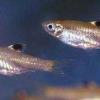 Eyespot
Eyespot  Goldfish
Goldfish  Penguin
Penguin  Siamese
Siamese  Pearl
Pearl  Glowlight
Glowlight  Crossbanded
Crossbanded 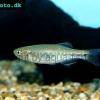 Yoma
Yoma  Orange
Orange 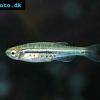 Dwarf
Dwarf  Zebra
Zebra  Rose
Rose  Red
Red  Arulius
Arulius  Tambraparni
Tambraparni  Fiveband
Fiveband  Bengal
Bengal 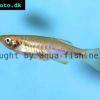 Tiger
Tiger  Malabar
Malabar  Queen
Queen  Hora
Hora  False
False  Redtail
Redtail  Rainbow
Rainbow  Flying
Flying  Garra
Garra  Black
Black 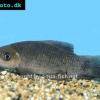 Purple
Purple  Burmese
Burmese  Dwarf
Dwarf  Isok
Isok  Rosy
Rosy 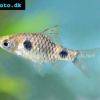 Two
Two 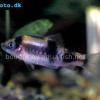 Melon
Melon 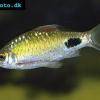 Black-spot
Black-spot  Golden
Golden  T-Barb
T-Barb  Ruby
Ruby  Checkered
Checkered  Rhomb
Rhomb  Gold
Gold  Tiger
Tiger  Cherry
Cherry  Brittan’s
Brittan’s 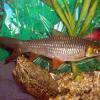 Greater
Greater  Long-band
Long-band  Twospot
Twospot  Reticulate
Reticulate  Cherry
Cherry  Denison
Denison  White
White  Lambchop
Lambchop  Harlequin
Harlequin